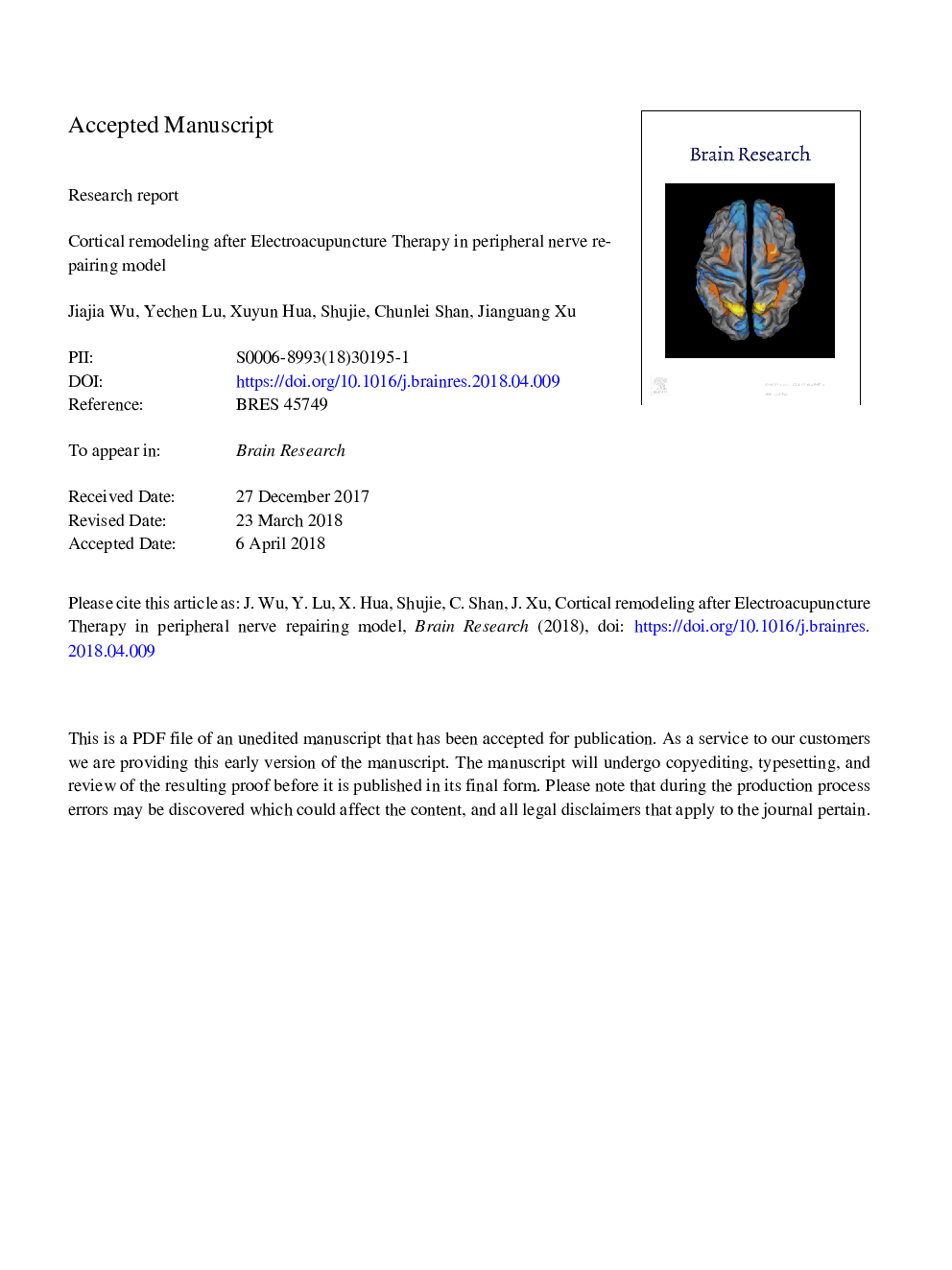| Article ID | Journal | Published Year | Pages | File Type |
|---|---|---|---|---|
| 8839793 | Brain Research | 2018 | 48 Pages |
Abstract
Electroacupuncture (EA) is an alternative therapy for peripheral nerve injury (PNI). The treatment relies on post-therapeutic effect rather than real-time effect. We utilized fMRI to clarify the resting-state alteration caused by sustained effect of EA on peripheral nerve repairing model. Twenty-four rats were divided equally into three groups: normal group, model group and intervention group. Rats of the model and intervention group underwent sciatic nerve transection and direct anastomosis. EA intervention at ST-36 and GB-30 was conducted continuously for 4â¯months on the intervention group. Behavioral assessments and fMRI were performed 1â¯month and 4â¯months after surgery. Intervention group showed significant improvement on the gait parameters max contact mean intensity (MCMI) and thermal withdrawal latency (TWL) than model group. EA-related sustained effects of amplitude of low frequency fluctuations (ALFF) could be described as a remolding pattern of somatosensory area and sensorimotor integration regions which presented higher ALFF in the contralateral hemisphere and lower in the ipsilateral hemisphere than model group. Interhemispheric functional connectivity (FC) analysis showed a significantly lower FC after EA therapy between the largest significantly different clusters in bilateral somatosensory cortices than the model group 4â¯months after surgery(pâ¯<â¯0.05). And the model group presented significantly higher FC than the normal group at both two time-points (pâ¯<â¯0.01). The sustained effect of EA on peripheral nerve repairing rats appeared to induce both regional and extensive neuroplasticity in bilateral hemispheres. We proposed that such EA-related effect was a reverse of maladaptive plasticity caused by PNI.
Related Topics
Life Sciences
Neuroscience
Neuroscience (General)
Authors
Jia-Jia Wu, Ye-Chen Lu, Xu-Yun Hua, Shu-Jie Ma, Chun-Lei Shan, Jian-Guang Xu,
